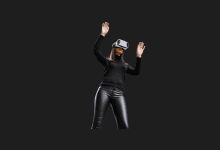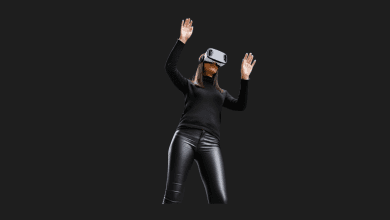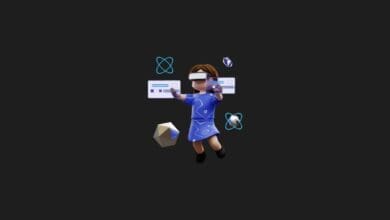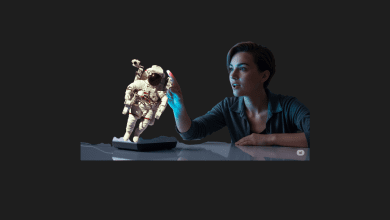A Comprehensive Study of the Metaverse
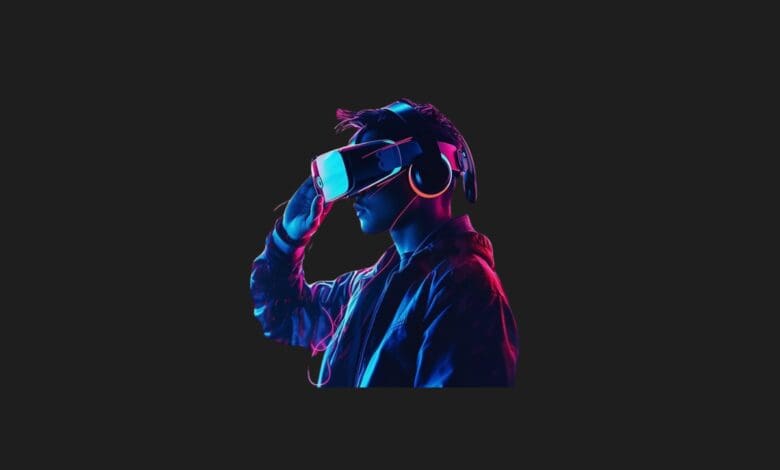
The metaverse merges the virtual world with the real world for users, enabling seamless interaction in both real and simulated environments through the use of avatars and holograms. It has the potential to expand the physical world through augmented and virtual reality technologies.
Virtual environments and immersive games like Second Life, Fortnite, Roblox, and VRChat are considered precursors to the metaverse, offering users a complete, functional, and persistent platform. Although the concept is not new, its application has only recently begun to gain traction. This study focuses on the term “metaverse,” a topic that is relatively new and lacks extensive examples in the literature. The definition, applications, importance, benefits, and challenges of the metaverse are discussed, along with insights into potential future developments with this technology.
By introducing this technology, the study aims to contribute to the literature for future research. Additionally, the technologies used within the metaverse are introduced, and the topic is explored in detail. This study will serve as a reference for researchers interested in exploring this field.
Keywords: Metaverse, Virtual Reality, Augmented Reality, Mixed Reality, Artificial Intelligence, Blockchain
1.Introduction
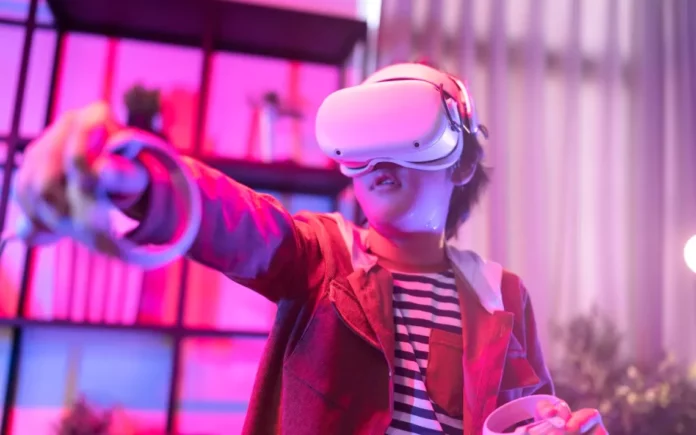
The concept of the Metaverse was first proposed by Neal Stephenson in his science fiction novel Snow Crash over 30 years ago. Today, the Metaverse has become one of the most popular concepts in both industry and academia, thanks to advances in blockchain, the Internet of Things (IoT), artificial intelligence, and cloud computing technologies . It was first introduced in Stephenson’s 1992 publication, Snow Crash, which depicted a virtual universe and a parallel virtual reality world created through computer graphics. Users from around the world can access this virtual world through glasses and headphones.
The foundation of the term “Metaverse” is built on the analogy of the information superhighway, consisting of various virtual neighborhoods and places, known as “the Street” protocol. Users interact with this environment through digital entities called avatars. While Stephenson’s Metaverse is digital and synthetic, the experiences within it can have real effects on the physical self. The concept also draws parallels with the cyberspace described as “The Matrix” in William Gibson’s 1984 science fiction novel
The Metaverse is a continuous and persistent multi-user environment that merges physical reality with digital virtuality, forming a post-reality universe. This concept integrates technologies such as Virtual Reality (VR) and Augmented Reality (AR), enabling interactions among digital objects, people, virtual environments, and multisensory experiences (Buhalis & Karatay, 2022). It represents a new form of internet application and social interaction, characterized by multiple technologies, sociability, and hyperspatial-temporality. The Metaverse comprises five perspectives: network infrastructure, governance technology, core common technology, virtual reality object connectivity, and virtual reality convergence (Mystakidis, 2022). It offers an immersive experience based on augmented reality technology, creates a mirror image of the real world using digital twin technology, establishes an economic system based on blockchain technology, and tightly integrates the virtual world with the real world in an economic system.
The Metaverse remains an evolving concept, with its meaning being enriched by various participants in their unique ways . Although it is a new trend globally, research on the Metaverse is still limited. The recent studies in the literature are presented in Table 1:
| Source | Method Used |
|---|---|
| Lee et al., 2022 | Developed and implemented a Metaverse-based children’s social skills training program aimed at improving the social interaction abilities of children with autism aged 7-12. Biometric data collected through wearable devices were compared and analyzed while applying the Metaverse-based social skills training program to evaluate emotional changes in autistic children in stressful situations. |
| Park et al., 2022 | Developed a method that uses smartphone functions and data to reduce the burden of high computing power and other related resources in the Metaverse and create a personal virtual space. An intuitive personal virtual space was created using smartphone data, and a new type of metadata repository application was developed using photo data recorded on a smartphone. |
| Huh, 2022 | Explored the emergence of the Metaverse in medical education and focused on computer-based testing applications and journal metrics in medical education. |
| Dwivedi et al., 2022 | Introduced the concept of the Metaverse, addressing the challenges, previous studies, and opportunities. |
| Wang et al., 2022 | Presented a study using the Metaverse to analyze emotional intelligence for the digital native generation. The study highlighted the decline in emotional intelligence due to dissatisfaction with the rapid adaptation to the new normal after COVID-19. The research proposed an analysis to mitigate the psychological side effects of emotional intelligence when people are connected to the new normal life. |
| Lin et al., 2022 | Proposed a blockchain-based trusted collaborative management system for Metaverse analysis. The study also demonstrated how the new metadata repository concept could be validated, implemented, and scaled to develop, transform, and revitalize traditional manufacturing industries. |
| Arpacı et al., 2022 | Used a hybrid SEM-ANN approach to understand the social sustainability of the Metaverse. This method was developed by integrating UTAUT2 structures and five major personality traits to understand the social sustainability of the Metaverse. The model was tested using a hybrid covariance-based method. |
| Dinçelli & Yayla, 2022 | Addressed the challenges and opportunities presented by virtual reality for information systems, focusing on aspects such as regulation, interaction, navigability, sensory capability, and creativity. The study was conducted based on 151 students. |
| Yung et al., 2022 | Highlighted the growing importance of virtual events due to COVID-19 but noted that the boundaries between virtual events and the terminology for different types of virtual events were not clearly defined. The study aimed to resolve conflicts in this area by presenting a conceptual model integrating the virtuality of the environment, location, and the three dimensions of social presence as the SPEL cube. |
| Tlili et al., 2022 | Demonstrated the importance of the Metaverse in education and its impact on the success of Generation Y and Z in education and training. The study also presented the increase in young people’s interest in learning resources, mobile learning, hybrid learning, and microlearning with the Metaverse. The impact of this concept on learning was compared by adopting it in education worldwide and improving the study areas of disabled students. |
| Bibri et al., 2022 | Analyzed emerging trends enabling and driving data-driven smart cities and used the results to design a new framework for the digital and computational processes underlying the Metaverse as a virtual form of data-driven smart cities. The study also examined the risks and impacts of the Metaverse. Concepts such as technocratic governance, governability, privacy, security, and data management, which were discussed in the context of the COVID-19 crisis and the subsequent non-spontaneous normality of the social order led by corporate leadership, were also discussed. Additionally, the study described the computational process related to smart cities, including digital instrumentation, digital hyper-connectivity, datafication, algorithmization, and platformization, and considered the open synergies to ensure the potential operation of the Metaverse towards virtual cities and their integration. |
| Schumacher, 2022 | Focused on the design drivers and core competencies for architecture and society within the Metaverse, addressing studies on the design of the three-dimensional virtual world. |
| Shen, 2022 | Suggested that creating a VR world in the form of three-dimensional interaction can deepen the understanding of Chinese culture by transcending the constraints of time and space. The study designed a two-stage task allocation algorithm to achieve the optimal solution for the task of loading problems by applying the Nash equilibrium. This approach can reduce average latency and improve user experience by offloading VR computing tasks to edge servers. |
2.Material and Method

The Metaverse, while not a new concept, is becoming increasingly prevalent today. By bridging the unique possibilities of Mixed Reality (MR), Virtual Reality (VR), and Augmented Reality (AR) technologies with the connections of social media, it transforms many industries by overcoming distance barriers in online education. Emerging models of meta-education could leverage Metaverse-supported online education to offer rich, blended, and pervasive learning experiences in 3D virtual campuses. Using virtual reality technology for remote machine management, improving the accuracy of avatar body language and facial expressions, can make virtual participation equally effective. Additionally, the social mixed reality in the Metaverse could enable more profound and lasting knowledge through blended active pedagogies. More importantly, it could democratize education, enabling equal participation worldwide.
As a new application of the Internet, the Metaverse integrates various new technologies and features multiple technological aspects. As a new form of sociality, it encompasses economic, cultural, and legal systems closely related to but distinct from reality. The Metaverse also exhibits hyper-spatial-temporal characteristics, referring to a virtual world parallel to the real one. It transcends the boundaries of time and space, offering users an open, free, and immersive experience.
3.Metaverse Technology
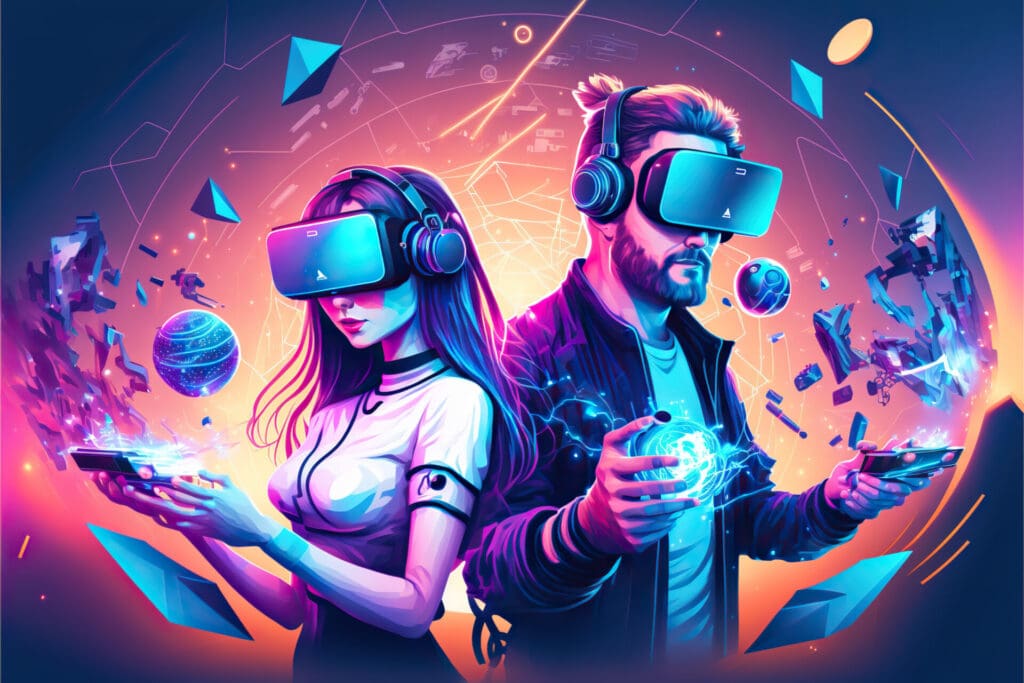
The Metaverse represents the tight integration, interaction, and interweaving of real and virtual worlds, requiring the integration of various new technologies to create a new Internet application and social form. Figure 3 illustrates the technologies involved in the Metaverse, including network infrastructure, management technologies, core common technologies, virtual reality object connections, and virtual reality convergence. Whether performing large-scale computing tasks remotely or accessing large databases or shared user data, all these technologies are connected to networks and communications.
Fifth-generation (5G) and sixth-generation (6G) technologies are fundamental to the communication infrastructure of the Metaverse. 5G offers advantages such as high speed, low latency, ubiquitous network access, low power consumption, and the interconnection of everything, making the Metaverse feasible. 6G breaks the boundaries of time and virtual reality, extending service objects from physical world humans and machines to the virtual world environment. It provides the network foundation for the Metaverse by connecting the virtual and physical worlds, facilitating cooperation between people, machines, objects, and environments. In the 5G and 6G network environment, quantum communication ensures communication security in the Metaverse. Quantum communication improves overall security due to the superposition properties of qubits. Additionally, the Internet of Things (IoT) plays a crucial role in the Metaverse’s network infrastructure, offering users a completely real, permanent, and seamless bridge between the Metaverse and the real world. Creating the Metaverse requires a powerful computing system. Current computing architectures face challenges in meeting the low threshold and intensive requirements of the Metaverse. In this context, cloud computing, edge computing, and other computing paradigms play a significant role in enhancing computing power.
Metaverse management technologies create the necessary environment for the connection and convergence between the virtual and real worlds, primarily focusing on energy management, resource management, and session management (Narin, 2021). The first consideration in energy management technology is the electrical energy consumed by Metaverse architecture and facilities. An important aspect of management technology that the Metaverse needs to address is how to effectively discover, allocate, and address resources. Session management involves managing interactions between resources and resource users across heterogeneous networks. In the Metaverse environment, managing dynamics and persistent interactions for sessions with multiple resource users is crucial. Additionally, the real-time nature of sessions can be utilized to enhance the user’s experience.
The core common technologies of the Metaverse include artificial intelligence, spatial-temporal consistency, security, and privacy. Artificial intelligence algorithms (e.g., machine learning, deep learning, reinforcement learning) are the “key” to connecting the virtual world with the real world. Artificial intelligence consists of three elements: data, algorithms, and computing power, which play a significant role in establishing and developing the Metaverse. By using AI techniques, the Metaverse allows for secure and free participation in social and economic activities beyond the limits of the real world. Techniques such as computer vision, speech recognition, and natural language processing enable users to experience auditory sounds and visual images similar to or identical to those in the real world, providing a similar sense of reality.
The security and privacy of user data are among the major concerns in the real world. With the emergence of the Metaverse, the volume and richness of collected personal data are unprecedented. There is a high likelihood that multiple companies will collaborate and coordinate to create one or more Metaverses that ensure privacy and security, interacting across different Metaverses.
Metaverse identity modeling, distributed technology, and social computing act as bridges between physical and digital worlds. The Metaverse can be defined as a parallel network world to reality. Thus, similar to the real world, individuals entering the Metaverse require identity documentation and identity modeling technology, regardless of whether it relates to real identity. Identity modeling and addressing form a bridge between the real world and the Metaverse and represent a significant research area in the Metaverse era.
Users in the Metaverse cannot live without social computing. The emergence of the Metaverse does not replace real social relationships with virtual ones but introduces a new type of social relationship that integrates online and offline interactions. Social computing examines human behavior and social environments to predict operational laws and future trends. Additionally, collecting information on location, age, preferences, and other details is easier in the Metaverse. Every component of the Metaverse requires distributed technologies for security, including decentralized technology, blockchain, distributed storage, and distributed computing, as well as commonly used centralized technologies. The Metaverse has the potential to profoundly transform existing societal organization and operation through the integration of virtual reality. To understand the convergence of virtual and real worlds, the necessity of augmented reality, brain-computer interfaces, and video game technologies must be considered.
AR/VR/MR technologies are technical requirements within the structure of the Metaverse. Augmented Reality (AR) provides real-time information about detected objects (2D, 3D, GPS, face, and other perceived objects) on a device’s screen by overlaying virtual information on a physical location. Virtual Reality (VR) offers users a fully immersive experience, making them feel as though they are in the real world. Mixed Reality (MR) is a new visualization that combines real and virtual worlds. In this new visualization, the environment, physical, and digital objects coexist and interact in real time. The boundaries between VR/AR/MR will blur in the future, becoming a fusion product. Currently, the Metaverse offers unique technology for creating interactive virtual worlds for users.
Holographic imaging is a recording and reproduction technology that presents a real three-dimensional image of an object through optical paths. It is created through the combination of computer technology and electronic imaging technology.
Holographic imaging uses coherent light interference to record amplitude and phase information, capturing all details of an object, including its shape and size. Holographic images provide a true three-dimensional representation of an object. Users can view these images from different angles with the naked eye, without the need for specialized glasses.
Brain-computer interfaces (BCIs) encode and decode brain signals involved in processes such as playing games and writing, allowing for accurate analysis and recognition of these signals. This interface connects the human nervous system with external physical devices through commands recognized by computing devices, based on individual brain signals.
Video game technology is the most intuitive method for presenting the Metaverse. This technology not only provides a creative platform for the Metaverse but also facilitates the collection of interactive content and social scenes. The core of video game technology is the game engine, which involves the essential components of compiled and editable elements or real-time interactive visual applications within computer game systems.
4.Research Results and Discussion

While extended reality games and social spaces have existed for decades, the technological advancements and societal transformations brought about by the COVID-19 pandemic in the early 2020s have propelled the development of the Metaverse, inspiring investments worth tens of billions of dollars. Advocates of extended reality, alongside the development of more advanced and immersive 3D online worlds, contribute to the rapid evolution of activities in education, healthcare, gaming and entertainment, art, social and civic life, and more. Artificial intelligence can further enrich and expand the Metaverse by introducing new areas and experiences, accelerating the technology’s advancement.
The Metaverse now has a wide range of applications across various sectors, from business to entertainment. One of its most common uses is to facilitate interaction on social media platforms. The applications of the Metaverse can be categorized as follows:
Commercial Purpose: The Metaverse can assist businesses in leveraging new technological opportunities. By providing a more immersive social environment, businesses can promote their products and services through digital marketing and advertising, using tools like marketing materials, advertisements, virtual stores, and highly interactive customer engagement and service.
Education Sector: Video conferencing systems and asynchronous online courses, used for online learning, tend to be more actively engaged compared to other teaching approaches.
Entertainment: The Metaverse can be applied to virtual reality theme parks and amusement parks, making them more immersive and perfecting the experience.
Social Interaction: Platforms like Facebook and Twitter are two-dimensional, as they only allow screen-to-screen communication. Face-to-face communication in the Metaverse is real-time, and digital content can be realistically produced or explored in the virtual world.
However, the Metaverse faces several challenges related to underlying AR and VR technologies. Both technologies are powerful and can influence users’ cognition, emotions, and behavior. High equipment costs pose a barrier to the anticipated mass adoption. Risks associated with AR can be classified into four categories:
- Data Privacy: On a physical level, distractions caused by location-based AR applications have led to harmful accidents. Information overload is a psychological condition that must be avoided. Ethical issues include unauthorized replication. Data collection and sharing with third parties can have highly risky privacy implications. Additionally, the data layer could emerge as a potential cybersecurity threat. Volumetric capture and disclosing information online in an extended manner can lead to privacy breaches. More importantly, Metaverse players could compile users’ biometric psychographics based on their emotions, which could later be used for undesired behavioral inferences that feed algorithmic bias.
- Health Concerns: Regarding VR, common health issues include motion sickness, nausea, and dizziness. The weight of VR headsets also limits prolonged use due to head and neck fatigue. Extended VR usage can lead to addiction, causing distress such as social isolation and deprivation from physical life. Another drawback of open social worlds is the potential for cyberbullying and harassment, as high-quality virtual reality environments and violent representations can lead to malicious antisocial behavior and traumatic experiences.
- Data Ethics: Regarding data ethics, AI algorithms and deep learning techniques could be used to create deepfake avatars and identity theft in VR.
The term “Metaverse,” which encompasses a broad range of applications within virtual-social platforms, has become highly popular in both the media industry and academia. The Metaverse facilitates the social utilization of virtual environments by Generation Y and Z, allowing them to engage in supportive activities through their social presence in this domain. With the Metaverse, young people can prevent loneliness in their social lives, ensure social self-efficacy, foster supportive interaction, and develop social relationships.
In the Metaverse, various applications can be conducted through virtual reality without needing to be physically present. These applications span education, shopping, commerce, and many other fields. For example, individuals could engage in virtual shopping without having to visit a store or market physically. They would be able to pay for their purchases with digital currencies. The Metaverse could also create new job opportunities, and augmented reality technology could gain value through many software applications. Moreover, as seen in other fields, the media industry would also be impacted by this concept. Television, radio, magazines, and cinema could all be transferred to the virtual environment. However, despite all these positive developments, the transfer of sensitive and valuable personal data to the virtual environment, whether through digital currencies or otherwise, will raise significant security and privacy concerns. The potential consequences of these challenges will become more apparent in the future.
5.Results
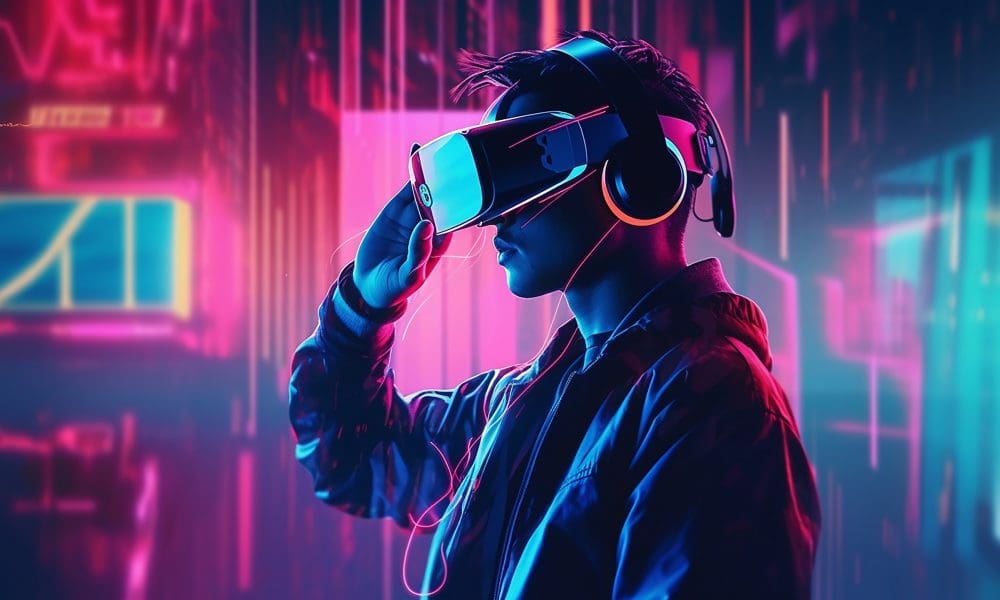
The Metaverse is a cutting-edge application that integrates a range of advanced technologies. By nature, it is multitechnological, social, and hyperspace-temporal. The concept of the Metaverse encompasses four key elements: environment, interface, interaction, and social value. Realism serves as a representative example of the classifications that distinguish the world. Metaverse environments consist of realistic, non-realistic, and hybrid environments. A hybrid environment blends realistic settings with non-realistic elements. The interface includes 3D, immersive, and physical worlds that reflect the real environment. Interaction is categorized into networking, collaboration, and personal dialogue. Social value addresses whether the Metaverse is a new value within society. Sustainability and interdisciplinary work are crucial in ensuring social values and maintaining a robust metaverse infrastructure.
Several leading technology companies are transitioning into the metaverse trend, with pioneers like Nvidia Omniverse, Facebook Horizon, and Microsoft at the forefront. The Metaverse integrates the most advanced technologies, such as 5G, cloud computing, computer vision, blockchain, artificial intelligence, and more, with applications spanning video games, art, business, and other fields. Moreover, the emergence of the Metaverse has sparked academic debate and discussion regarding its potential benefits and returns to society. This concept offers new and exciting levels of interaction with the virtual world and impacts the societal level. The Metaverse is often referred to as a virtual universe, creating a world distinct from the one we live in. In brief, the Metaverse can provide the Gen Z population with different ideas by allowing them to experience products designed for them and contribute to various activities, from entertainment to sports, by transitioning to a virtual environment.
The widespread adoption of the Metaverse in physical worlds, new opportunities, and potential business models brings about numerous issues related to governance, ethics, safety and security, acceptable behaviors, privacy, and access for populations lacking the necessary infrastructure. Advanced academic analysis of how businesses can operate within the virtual world is vital. In this context, this study, which thoroughly examines the concept of the Metaverse, will provide a new perspective. It will address the benefits and challenges faced, guiding future research efforts. The Metaverse will bring innovation in every field today and in the future, enhancing various aspects of our lives. This study will serve as a guide for researchers working with these technologies.
The Metaverse universe can create new opportunities for companies and individuals by finding online solutions to adapt virtual reality to the real world. This can be achieved in both business and entertainment spheres. The Metaverse can be applied to every aspect of our daily lives. With this concept, communication between people will reach new dimensions. Individuals may find themselves engaging in various activities in the virtual world, such as working, having fun, attending concerts, or playing games. They may feel immersed in the digital environment through these activities. By leveraging fields like robotics, artificial intelligence, virtual reality, and augmented reality, even more innovative solutions can be offered. With blockchain technology, the possibility of using virtual cryptocurrencies in the virtual environment may be realized in the future. These cryptocurrencies could pave the way for successfully establishing a virtual economy. Additionally, the impact of the Metaverse on education and technology will become more evident in the future. This study addresses the current developments, and as these developments continue, different ideas will emerge. It is also anticipated that this concept will be applied to various fields with technological advancements.
In summary, the Metaverse will develop alongside various disciplines, encompassing every moment of our lives and rapidly infiltrating many areas. As a result, the Metaverse is currently defined as the future of the internet. It is expected that many activities will take place in the virtual universe in the future.
You may also like this content
- Is GTA 6 Proof We’re Living in a Simulation?
- The Metaverse in 2040: A Trajectory of Hype, Hope, and the Human Condition
- What Happened to NFT and Metaverse Land Buyers?
Follow us on TWITTER (X) and be instantly informed about the latest developments…


